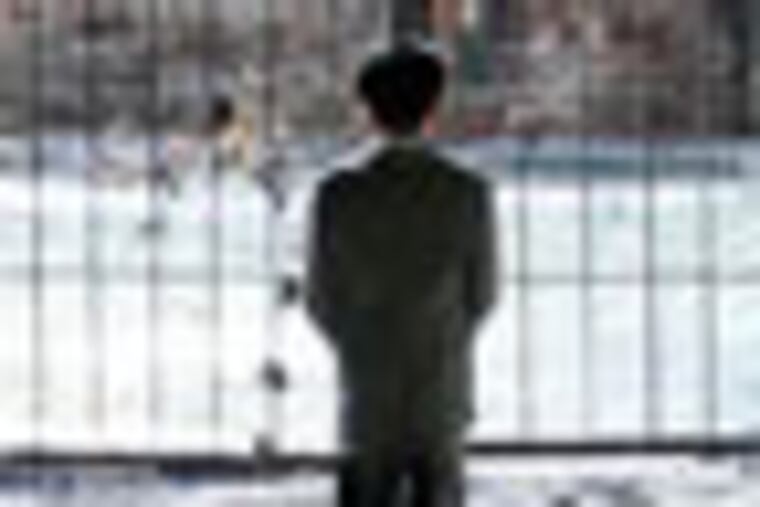Hitler statue in Warsaw brings reflection, debate
He is depicted praying, visible through a gate.

WARSAW, Poland - A statue of Adolf Hitler praying on his knees is on display in the former Warsaw Ghetto, the place where so many Jews were killed or sent to their deaths by Hitler's regime, and it is provoking mixed reactions.
The work, HIM, by Italian artist Maurizio Cattelan, has drawn many visitors since it was installed last month. It is visible only from a distance, and the artist doesn't make explicit what Hitler is praying for, but the broader point, organizers say, is to make people reflect on the nature of evil.
In any case, some are angered by the statue's presence in such a sensitive site.
One Jewish advocacy group, the Simon Wiesenthal Center, this week called the statue's placement "a senseless provocation which insults the memory of the Nazis' Jewish victims."
"As far as the Jews were concerned, Hitler's only 'prayer' was that they be wiped off the face of the earth," the group's Israel director, Efraim Zuroff, said in a statement.
However, many others are praising the artwork, saying it has a strong emotional impact. And organizers defend putting it on display in the former ghetto.
Fabio Cavallucci, director of the Center for Contemporary Art, which oversaw the installation, said, "There is no intention from the side of the artist or the center to insult Jewish memory."
"It's an artwork that tries to speak about the situation of hidden evil everywhere," he said.
The Warsaw Ghetto was an area of the city that the Nazis sealed off after they invaded Poland. They forced Jews to live in cramped, inhuman conditions there as they awaited deportation to death camps.
The Hitler representation is visible from a hole in a wooden gate across town on Prozna Street. Viewers only see the back of the small figure praying in a courtyard. Because of its small size, it appears to be a harmless schoolboy.
"Every criminal was once a tender, innocent and defenseless child," the center said in a commentary on the work.